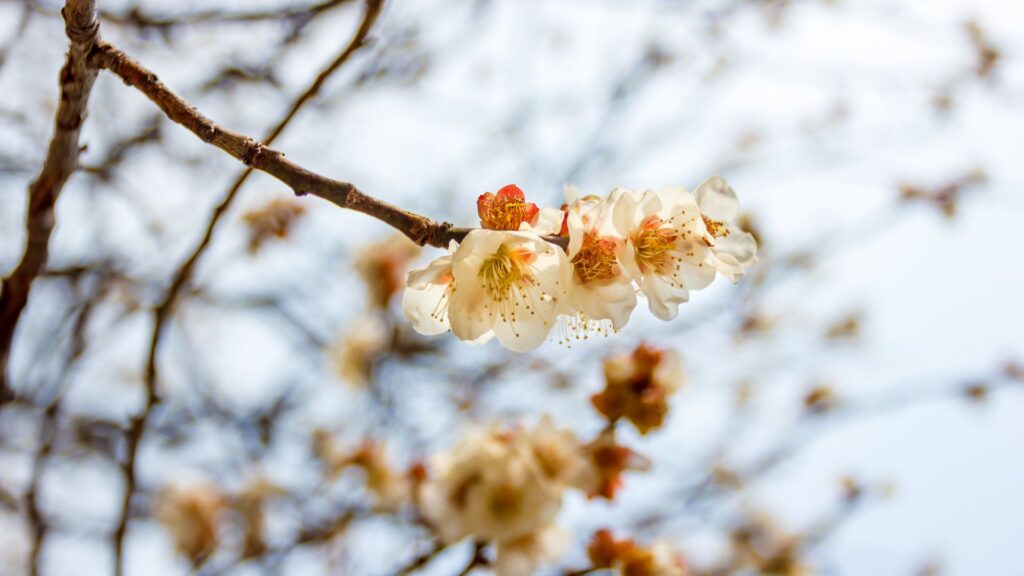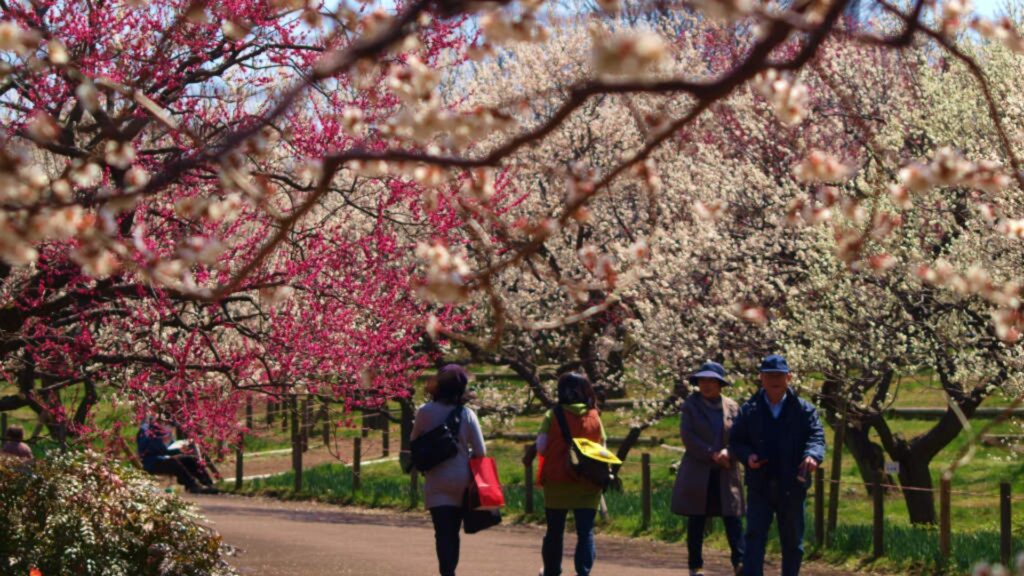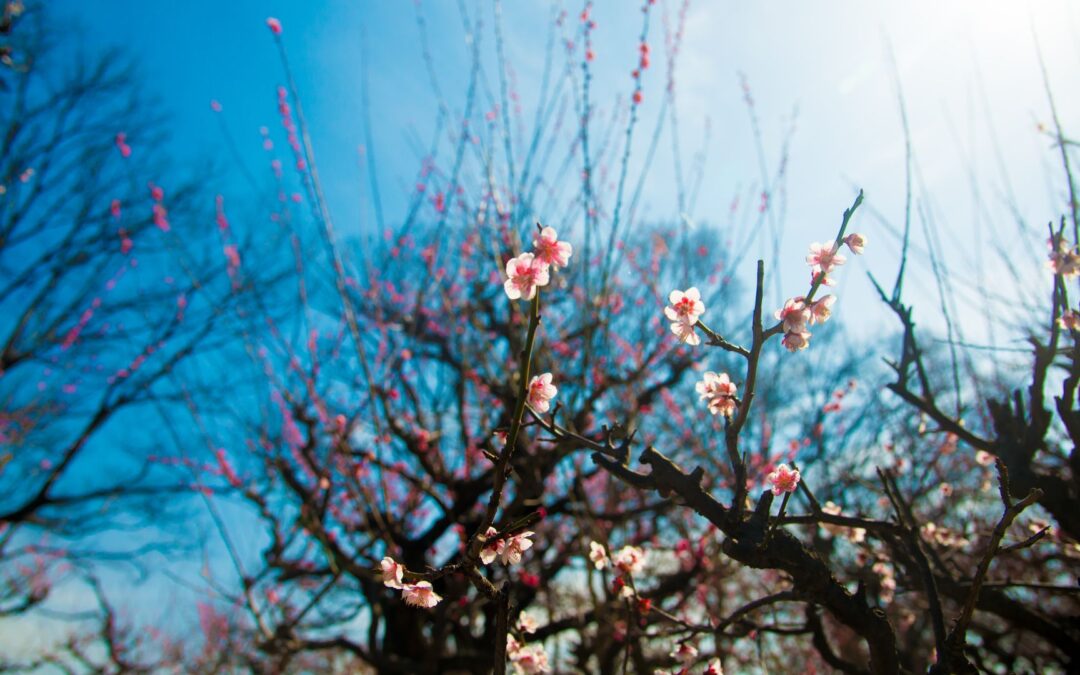Each and every flower in Japan represents something special. No matter the season, the time of the year or the prefecture in Japan, you seem to be able to find different flowers at every turn. Ume in Japan are so gorgeous and there are beautiful spots around the country to find these seasonal flowers. To help you experience Japanese ume to the fullest, let’s have a look at ume in Japan, and when and where to see ume.
Find out all about the different flowers in Japan you can enjoy throughout the year here. Check out what, when and where to see these flowers here: Cherry Blossoms, Tulips, Azaleas, Roses, Poppies, Salvia, Hydrangea, Iris, Lavender, Indian Lotus, Sunflowers, Ume and Moss phlox.
What is Ume in Japan?

The Japanese plum (also known as Japanese apricot) was imported from China and has played a significant part in Japanese culture for millennia. It was later superseded in popularity by the cherry tree. Because plum flowers are among the first to open during the year, the plum is associated with the onset of spring.
They bloom in most parts of Japan, including Tokyo, around February and March, however some types bloom earlier. Plum festivals (ume matsuri) are held in public parks, shrines, and temples all around Japan to commemorate the occasion. The majority of plum flowers have five petals and are white to dark pink in colour.
There have also been cultivars with more than five petals and weeping branches. Unlike Cherry Blossoms, Plum Trees have a very strong, sweet-smelling scent.
When to see ume in Japan?

The best time to see ume in Japan depends on the location and the exact area, but generally, you can see sunflowers in Japan around February to March.
Where to see Ume in Japan
Bairinji Temple

The precincts are adorned with around 170 plum trees of ten different varieties, which the priests have grown year after year. Red and white plums have relaxing colours and fragrances. Every year, it starts blooming around the beginning of February and lasts until the end of February or the beginning of March.
Kairakuen (Kairakuen 180th Anniversary 126th Mito Plum Festival)

Held at Kairakuen, one of Japan’s Three Great Gardens, from February 11th to March 21st. In the park, there are over 100 varieties of plum flowers in full bloom, and you may enjoy them for a long period, from early flowering to late blossoming.
Fuchu City Local Forest Museum

A outdoor museum with a 14-hectare local woodland. About 60 varieties of plums, including Dazaifu’s red and white plums, are in full bloom in the plum garden, contending for aroma. This year, a three-day nocturnal plum garden light-up will be held (February 25th, 26th, 27th). Enjoy the spectacular look of the night-blooming plum flowers.
Showa Kinen Park

Seasonal flowers are in full bloom on the large site of roughly 39 Tokyo Domes in this national park. There are roughly 80 different types of plum blooms and 230 plums to eat at Kabokuen Ume till mid-March.
Atami Plum Garden Plum Festival

There are 60 varieties of plums and 469 plum trees in full bloom, including some that are over 100 years old. There are early bloomers, medium bloomers, and late bloomers depending on the variety, and you can enjoy the plum blossoms whenever you visit.
—
What do you think about these flowers in Japan? There are so many different colours, shapes, types, sizes of flowers, no matter which season you decide to visit Japan, you will sure to be able to find gorgeous Japanese flowers to enjoy!
Find out all about the different flowers in Japan you can enjoy throughout the year here. Check out what, when and where to see these flowers here: Cherry Blossoms, Tulips, Azaleas, Roses, Poppies, Salvia, Hydrangea, Iris, Lavender, Indian Lotus, Sunflowers, Ume and Moss phlox.


Trackbacks/Pingbacks